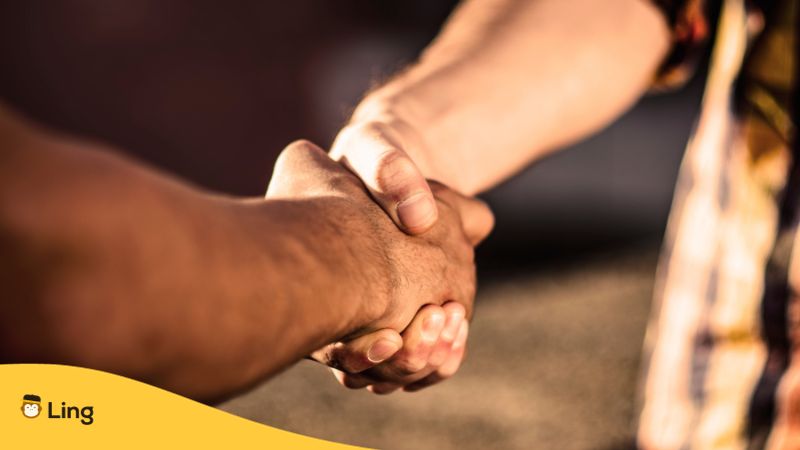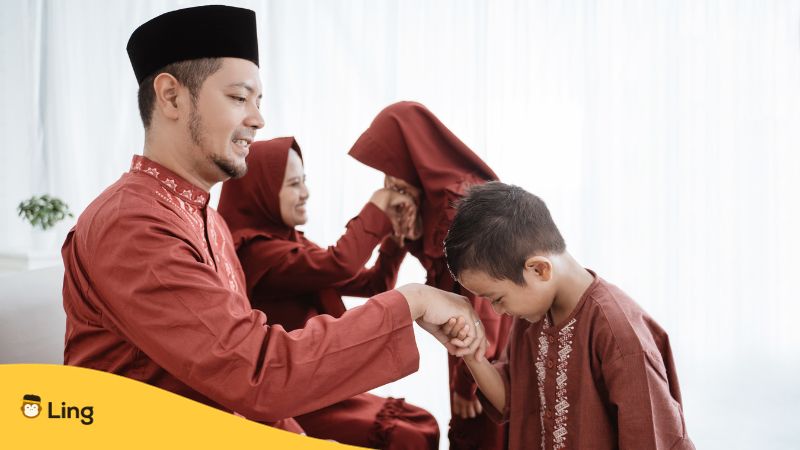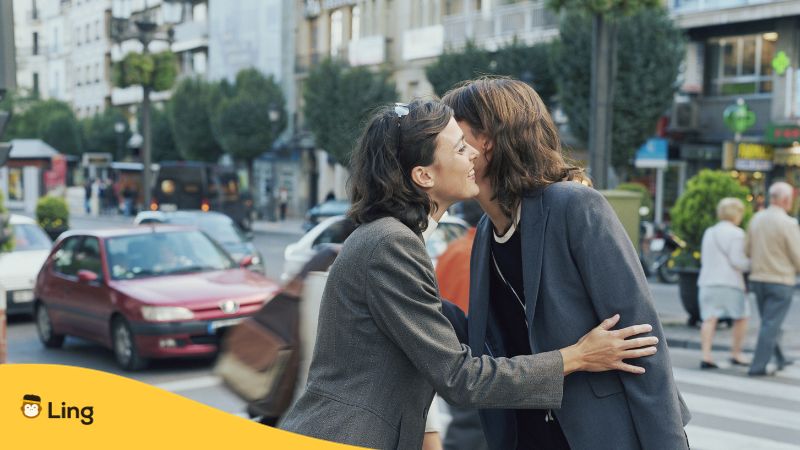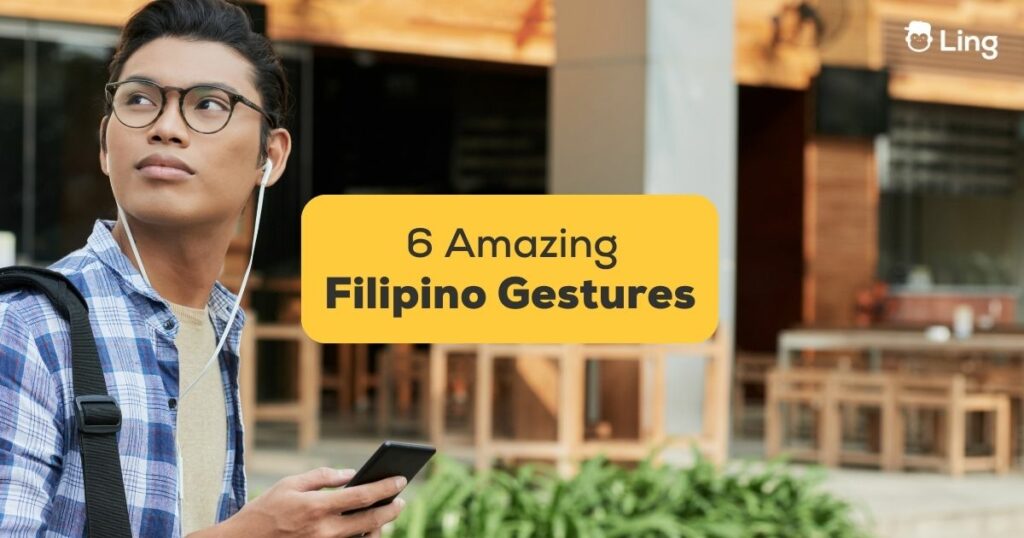Wondering about Filipino gestures? As a born and raised Filipina, I know my fair share of gestures – from the classics that all Filipinos use to the obscure signs that’ll have foreigners scratching their heads. We’re an expressive bunch, and hand signs, head bobs, and finger-pointing are how we communicate everything from “Come over here!” to “Well, screw you!”
And while some of our gestures may seem totally harmless and quirky from the outside, some can be downright offensive if you don’t know their meaning (I learned that the hard way in my travels abroad 🙊). At the same time, visitors to the Philippines could be tossing around signs that make Pinoys gasp, clutch their pearls, and ask, “Did that tourist just flick me off??”
So, to spare my kababayans (compatriots in the Tagalog language) and foreign friends alike from embarrassing “Did they really just do that?” moments, I’m dropping Filipino gesture knowledge as a public service announcement. Consider this your official guide to getting fluent in the unspoken language of gestures – Pinoy style!
Table of Contents
Common Filipino Gestures
When you first arrive in the Philippines, you’re bound to see locals using friendly hand signals that may seem totally bizarre and mystifying to a newcomer. What’s with all the pointing with pursed lips rather than fingers? And why does everyone keep waving me over palm-side down? Strange as they may look to foreigners, these motions are everyday gestures that all Filipinos know for smooth communication sans words.
In this section, I’ll explain the friendly Physical signs you’re almost guaranteed to encounter around here – from the classic “come over” curl of the fingers to the complex eyebrow semaphore you’ll see young folks using.

Handshaking
Handshakes or pakikipagkamay here aren’t just brief greetings like back in the West. Pinoys infuse deep meaning into the duration, grip, and intricacy of a simple palm press. It becomes a complex unspoken conversation!
Take when you first meet someone… a quick pump and release is still polite to say “Hello, nice to meet you!” without overdoing it early on.
But pay attention as you become chummier with a new buddy or work friend. Next time they shake your hand, notice if they grip firmer and maintain that hold for a few extra seconds rather than a short pump. That prolonged palm press is their subtle way of saying, “I now consider us legit friends, not just casual acquaintances!” It secretly establishes bonding and trust without saying it outright.
Pouting Lips
If you’ve ever seen locals using pursed, pouted lips to point out directions, places, or people, you’ve witnessed the trademark Filipino pointing gesture. Unlike much of the Western world, where pointing with the index finger is standard, using our lips to indicate something or someone is common practice here.
This distinctive pointing style traces back to the cultural value we place on being polite and non-confrontational. Pointing at anything with a single finger is considered impolite and even rude by many Filipinos. So we’ve adapted by puckering our lips and tilting our heads to identify what we’re referring to without causing offense. Visitors attempting to get directions will have better luck following where the lips aim rather than looking at the fingers!

Pagmamano
In a culture that values honoring elders and showing utang na loob (debt of gratitude), the pagmamano gesture is an integral part of everyday interaction. This iconic Filipino sign of respect involves taking the hand of an elder or respected person and bringing the back of their hand to your forehead.
You’ll often observe pagmamano practiced in homes when children greet their grandparents, at graduations when students show gratitude to teachers, and at fiestas when the community pays respects to elders. During special milestones like weddings or birthdays, a line may form so everyone can mano the guest of honor!
Nodding
Beyond just indicating yes or no, you’ll notice nodding or pag-tango and tilting heads play a central role in how Filipinos acknowledge and greet each other in social settings. Whether passing an acquaintance at the mall or spotting a friend across the bar, you’ll see locals employ an array of chin flips, eyebrow raises, and slight head bobbles as a casual “hello.”
The gesture may be almost imperceptible – just a subtle uptick of the chin or quick cock of the head to one side. But that miniature head motion serves to say, “Kumusta, I see you there,” when catching the eyes of someone familiar yet not close enough to necessitate stopping for small talk. This just saves you from having to say a full greeting or blurting out “Hi!” to every third person you know at the grocery store on a rushed evening!

Beso-beso
While public displays of affection often remain subtle in the Philippines, you’re bound to encounter the cheek-to-cheek gesture called beso-beso within social circles. Typically exchanged between women or mixed-gender groups of close friends or relatives, it serves as a customary greeting that conveys warm familiarity.
To perform this dance-like ritual, lean in to lightly brush both cheeks back and forth against the recipient’s while making a light smacking sound with pursed lips. The number of repeats depends on the degree of intimacy – two or four alternating cheek brushes are common among friends, while distant relatives or less familiar connections may keep it to one per side.
Prolonged Eye Contact
To Westerners used to brief eye contact as polite and socially normal, getting the fixed fiery gaze from Filipinos can feel downright uncomfortable. Why does that cashier keep staring me down while handing back change? And why hasn’t my friend broken off this long soul-connecting look for three whole minutes now??
Unlike cultures that see lengthy direct staring as intrusive or aggressive, maintaining eye contact here has different implications. In conversation, it signifies sincere listening and interest in what the speaker has to say without interjecting words. Even among shy Pinoys, once engaged in talk, you may notice the speaker’s eyes remain trained on yours even as their volume drops to near-whisper.
Elders admonishing the young may also employ the stern, silent eye lock to convey the gravity of their message over finger-wagging. And for romantic connections, that lingering look swapped between two people signals mutual attraction and desire to gaze endlessly into each other’s mga mata (eyes).
Learn Tagalog With Ling
As you can see, gestures and body language form a vital unseen communication channel in the Philippines. From subtle raised eyebrows to complex handshakes loaded with meaning, understanding these unspoken cues helps you fully plug into Pinoy culture.
While this covers some of the highlights, there’s still so much more to discover about traditions and daily life here. To dive deeper into connecting with locals and mastering key terms, I highly recommend using the Ling app.
Ling features bite-sized Tagalog language lessons conveniently accessible by phone, so you can build vocab on the go. With it, you can quickly choose from essential phrases for getting around or food vocabulary for market runs. The app also explains terminology and pronunciation with straightforward lessons to boost retention.
Ready to give Ling a try? Download it now!


































































